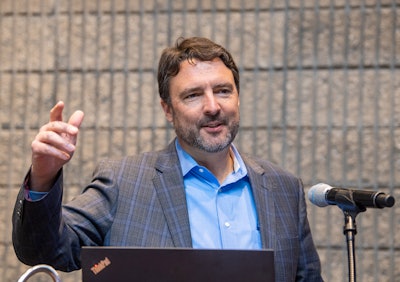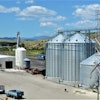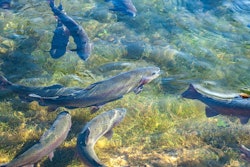
"Rendering started in the United States around the 1800s, when there was a rendering company in every town," said Kent Swisher, president and CEO of the North American Renderers Association (NARA), during his presentation at the International Rendering Symposium, held in conjunction with the2022 International Production & Processing Expoin Atlanta.
Today, theNorth American Renderers Associationrepresents members from the U.S., Canada and Mexico, helping them export their products and by opening new markets overseas, said Swisher. The NARA and U.S. Poultry & Egg Association sponsored the program.
In his opening remarks, Swisher provided an overview of the work conducted by NARA. Swisher expressed that NARA’s focus is on sustainability and advocacy in both regulatory and legislative areas, the renewal of fuels and international research of fat uses, and also being a supplier of low carbon ingredients to the feed and energy sectors.
Jody Jenkin, product line manager at Smithfield Foods, discussed the value and uses of rendered products.
“Rendering is recycling, rendering is revenue, and rendering is necessary," she said.
Jenkin observed that rendering is recycling and revenue because very little is thrown away or taken to the landfills. Among numerous other uses, products from rendering include soaps, candles, creams, cosmetics, cleansers, lubricants, organic fertilizers, biofuel, animal feed and products used in aquaculture.
The sale of rendered products provides an economic contribution of $10 billion annually in the U.S.
Jenkin continued by remarking that rendering is also necessary. “In the U.S., 50% of the animal is eaten. If the other 50% is not rendered, it would be kept in our environment or go to the landfills. If there were no recycling plants in the U.S., the landfills would fill up in four years,” she said.
克莱姆森大学Annel格林博士,教授,provided a research overview on the future of rendered products. She discussed projects that have been chosen for funding, including one that provided an on-site demonstration of electrocoagulation treatment of rendering wastewater, which is a different way of cleaning water.
Another research project resulted in an instructional video being created on environmental sampling for pathogenic microorganisms in rendering plants for use in educational programs by the Animal Protein Producers Industry and individual companies.
“A total of 157 research projects have been conducted or are on-going, and 54 faculty are directly involved in conducting the studies," says Dr. Greene.
"More than 82% of funded projects have been conducted by faculty who have been at Clemson less than 10 years, and more than 2,800 undergraduate students have been introduced to the rendering industry.”





















